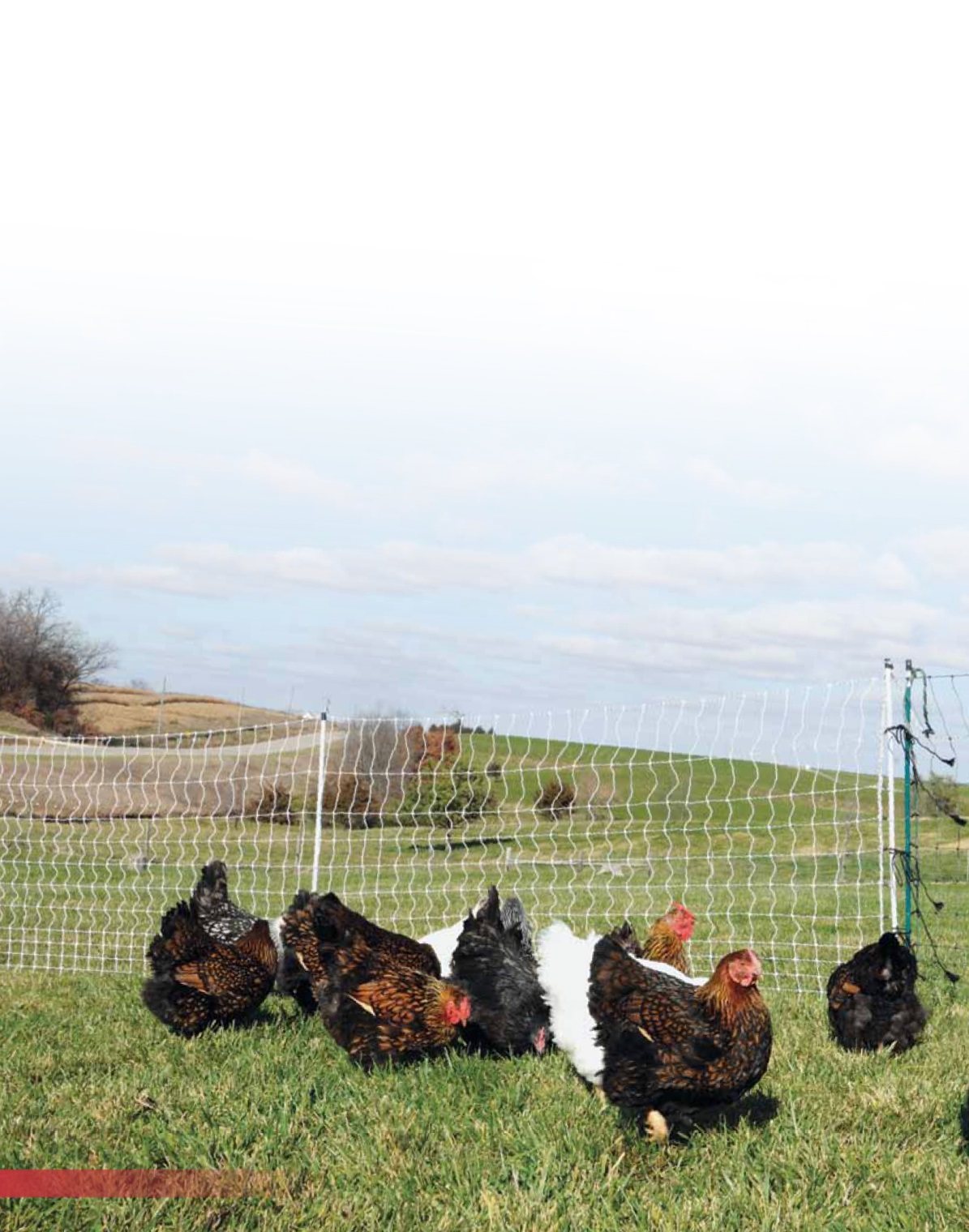
30 POULTRY FENCES
www.premier1supplies.com• 1-800-282-6631
What is poultry netting?
An electrifiable, prefabricated,
portable fence. Arrives complete with
built-in line posts. (Fence will also
need an energizer with a ground rod.)
A 164 ft standard roll inclusive of line
posts weighs only 23 lbs.
Vertical plastic strings are welded to
black and white (or yellow) conductors.
They are supported by .60" diameter
white plastic PVC posts—which are
spaced throughout the netting. Each
post has a small, steel spike that’s
inserted into the soil for support.
How does netting work?
The horizontals (except for the
bottom one that rests on the grass)
are energized by a fence energizer
(purchased separately). When birds
(and predators on the outside) touch
it, they receive a shock from the brief
electric pulse—and learn to avoid it.
The close spacing of the verticals
and horizontals (2"x3" at bird height)
creates a physical and visual barrier to
adult birds and their predators. Strings
are used for verticals in order to reduce
overall weight.
Why is it so popular?
• Arrives via UPS/FedEx/SpeeDee at your
door as a complete, preassembled fence.
Line posts are prefitted into each roll.
• Keeps in adult poultry.
•
Keeps out 4-footed predators
(if
properly energized).
• Much easier and faster
than other fences
to install, adjust, relocate and remove.
Takes less than 10 minutes to install a roll
(see p. 111)
.
• Flexible.
Unlike permanent fences,
netting is easy to install around corners
and curves, into valleys and over hills.
• No tools needed.
Only hand-tensioning.
• Endures.
A roll will last 10 seasons if
used with care. Its chief enemies are lawn
mowers and ice/heavy snowfalls.
How proven is it?
Energized poultry netting has been widely
used in the US and Europe for 25 years.
Producers now rely upon it.
How reliable is it?
Very reliable for adult birds that don’t fly
(or have clipped wings)—if it’s properly
electrified
(at least 3000 volts).
Not suited for chicks, ducklings and other
young/small birds (they can slip through the
small openings).
IntelliFence ® solutions for… Poultry, Ducks &GeeseHistory?
Invented in England in the 1960s.
Premier’s contributions have been:
• Black and white color in 1995 to increase
night visibility to humans and animals.
• Increased conductivity 1000% in 2003.
• Released PermaNet version in 2007.
• Added Plus option (extra posts) in 2011.
• Added FiberTuff
™
support posts in 2013.
• Drivable posts (in select nets) in 2015.
What’s the best energizer?
Wide-impedance energizers (such as
those described on p. 82) are less common
but are better choices for poultry than
energizers for horses and cattle.
Why? Because poultry, due to the nature
of their legs and minimal body weight,
have much higher total body resistance to
electricity than a cow, horse, pig or dog.
And the fence, due to its low-to-the-
ground nature, is prone to high weed
contact. So low output units (such as those
sold in farmstores) usually disappoint.
We recommend using a 0.5 joule unit or
larger for up to 3 to 4 rolls of PoultryNet.
The 0.25 joule units will work for 1 to 2
rolls of netting if grass contact is kept to an
absolute minimum.









